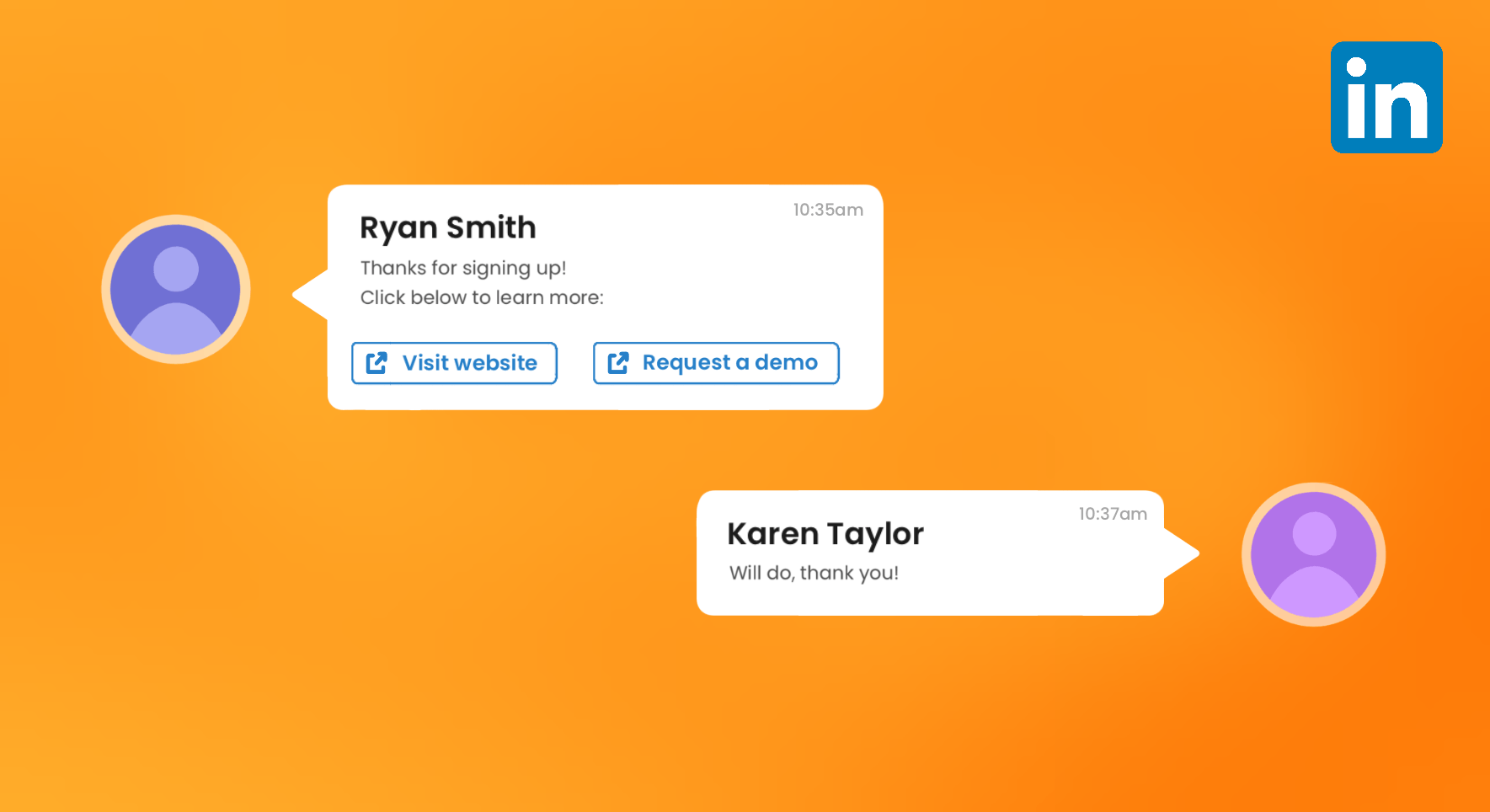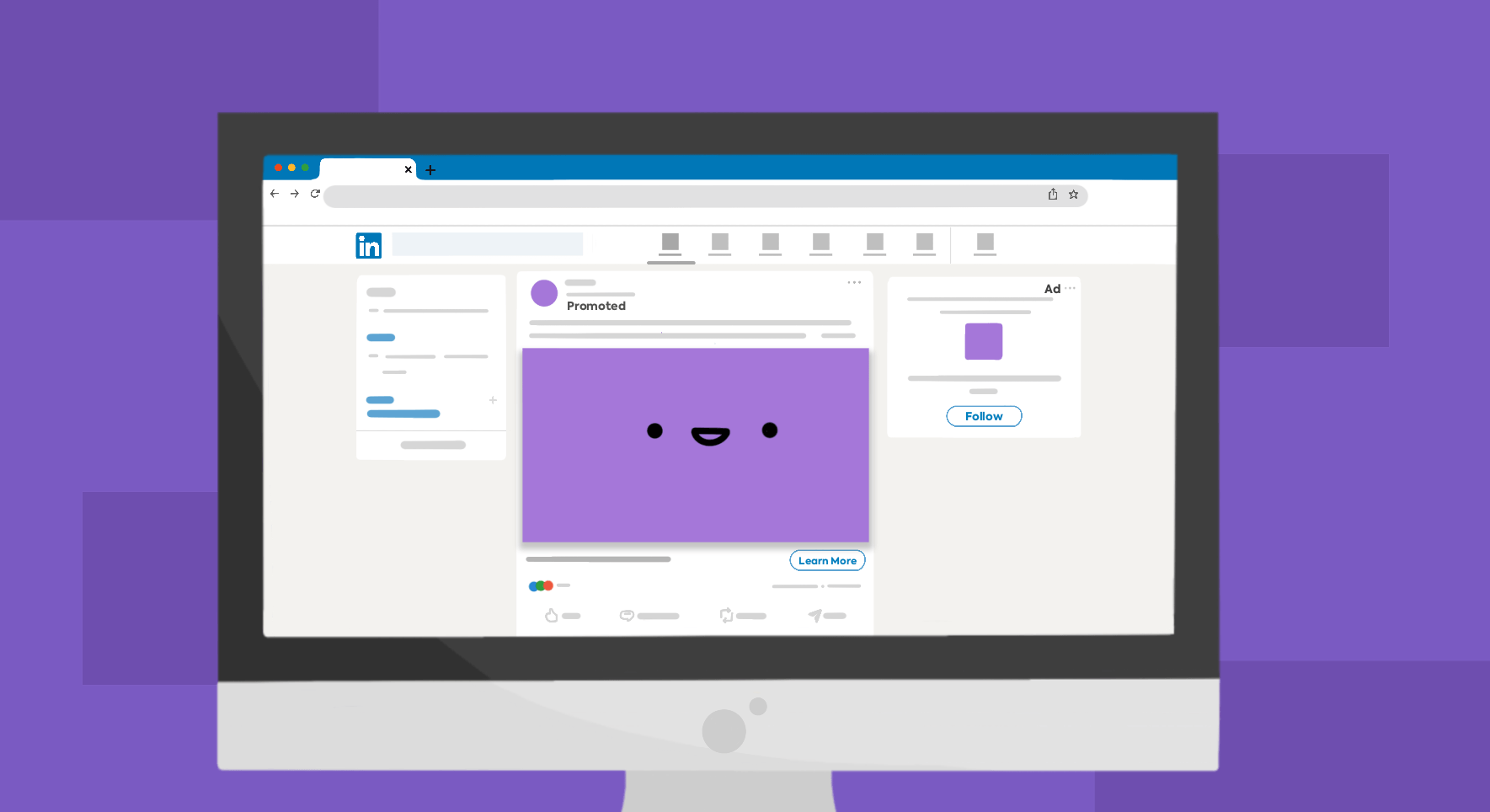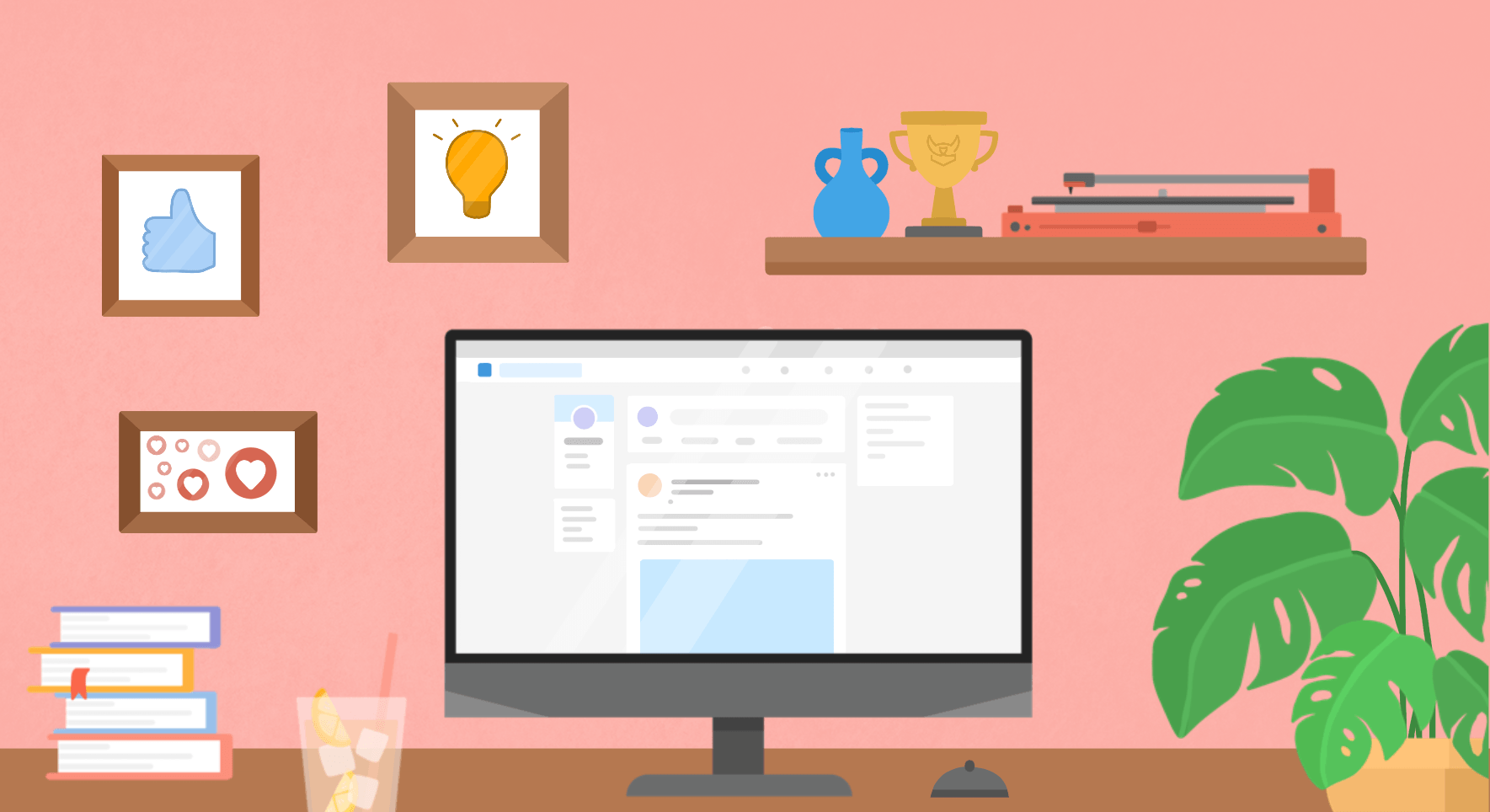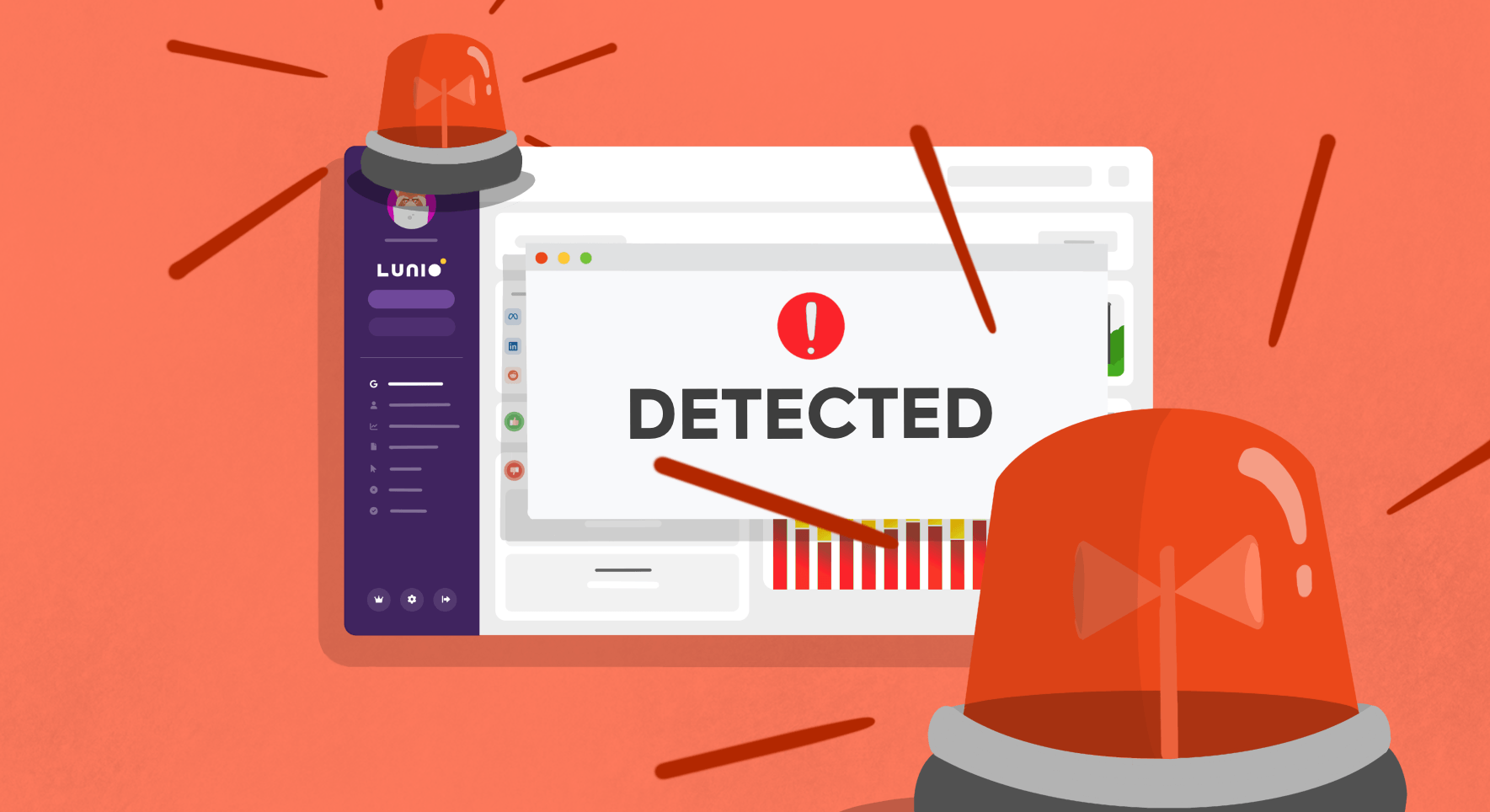LinkedIn InMails will always have their place, but does the “Hey LinkedIn Member…” (or other hyper-generic greeting) really differentiate them enough from a cold outreach email? Or even a search banner ad?
Fortunately, LinkedIn conversation ads (or conversation starter ads) were introduced a few years ago, and marketers have been quick to adopt them as a staple outreach method in the B2B space.
So, what are LinkedIn conversation ads, how do they work, and what separates a good conversation ad from a great one? More importantly, are they worth your time?
Let’s talk about it.
(We’ll also give you a step-by-step guide for creating effective LinkedIn conversation ads that drive conversions!)
What Are LinkedIn Conversation Ads?
Unique, personable, and highly effective – LinkedIn conversation ads allow marketers to create an entire chat experience through the messages section within LinkedIn that can appeal directly to your target audience.
Unlike message ads, LinkedIn conversation ads allow organizations to start conversations with their targeted audience, and provide unique value thanks to their choose-your-own-path experience.
Conversation ads let you build a conversation flow with your audience, allowing you to tailor your messages and create specific response options for recipients to learn more about your offering.
Advertise to Humans, Not Bots
Save up to 20% of your advertising budget by automatically eliminating fake ad clicks across all paid channels.
What’s the Benefit of LinkedIn Conversation Ads?
Personalization
You can personalize your messaging to suit the exact audience you want to target. Want to reach out directly to CMOs? Great – tailor your message to directly hit the pain points CMOs face, and offer services or resources that are directly relevant to them.
Conversation ads allow you to be creative, unique, and relevant when talking directly to your target audience, giving your organization the opportunity to really stand out.
Expanding the Engagement
Build a conversational flow and create specific response options tailored to the potential wants and needs of your target audience. Carry out a two-way conversation through your outreach and discover the requirements of your prospects. Conversation ads let you create value-driven CTAs for targeted leads at every stage of the buying process.
Increased Conversion Rates
The personalized nature of conversation ads typically results in higher conversion rates than most other ad formats. Guide prospects through a series of tailored messages and prompts to nurture your target audience, and provide them with resources that are directly tailored to them. By engaging in a valuable two-way conversation, you’re likely to see more demo requests, more webinar sign-ups, and more content downloads than with other ad types.
How to Set Up LinkedIn Conversation Ads
Have conversation ads piqued your interest yet? Let’s dive into a step-by-step guide on how to set up a successful conversation ad campaign.
Note: Already know the basics of setting up conversation ad campaigns and want to dive deeper into optimization and best practices? Skip straight to step 4!
1. Create a new campaign:
Similar to any other LinkedIn campaign, the first step is to go to LinkedIn Campaign Manager and click ‘create’ at the top left.
Once you’ve clicked create, rename your campaign and make sure you’ve selected ‘advanced’ rather than ‘quick’, and click next.
2. Target your campaign
Next, set your campaign objective. This can be whatever you need, however LinkedIn conversation ads are best at two things – driving traffic to a website, or sending users to a lead gen form. In this example, we’re going with a lead gen form.
Quick tip: Lead generation form CTAs typically result in the highest conversion rates for LinkedIn conversation ads.
Once you’ve selected your campaign objective, you’ll see an audience section where you can set location preferences, location exclusions, and so on. Set these so you’re only targeting prospects in locations where your product/service is relevant.
You’ll also see more detailed information about the type of prospect you want to target – job titles, industries, company lists, etc – set these preferences as you would on any other LinkedIn campaign.
Note: At the bottom of the audience section, you’ll see a tick box for ‘Enable Audience Expansion’. We highly recommend that you don’t click this, as it may end up serving your conversation ads to irrelevant prospects.
3. Select ad format, budget, & conversion tracking
Under the audience section, you’ll be able to select your ad format. Unsurprisingly, you’ll want to select the ‘Conversation ad’ format.
Next, you’ll see budget & schedule options. What you decide to do with your budget is situational and largely up to you, however we recommend starting your campaign with a slightly higher daily budget than usual for best results.
Currently, LinkedIn conversation ads operate using a CPC model. This means you’ll be bidding on your conversation ad appearing in front of the users you’ve targeted. The maximum bid is currently $300 USD – however, it’s very unlikely you’ll ever need to bid that highly.
Quick tip: Each LinkedIn user can get a maximum of one conversation ad every 22 days. To ensure your ad gets the right eyes on it (and in a timely manner), it’s usually worth bidding high early on.
You’ll then want to select any relevant conversion tracking for your campaign in the last section.
Once this is complete, hit ‘next’, then ‘save’ in the pop-up. By now, you’ll be looking at a screen saying ‘Create an ad for your campaign’. You’ll want to do just that, and click ‘create new ad’.
Now that the basics of your campaign are in place, the real fun begins…
4. Selecting your campaign sender
The first thing you’ll want to do is pick a sender. This is who the ad is going to come from – a person, not a company.
Pick a sender with a title closely related to the persona you’re targeting. For example, if you’re primarily targeting Marketing Directors, your sender could be a VP of marketing, or something similar. Keep it in the same department, if you can.
The exception here would be if you’re marketing to salespeople. Senders with sales titles are not the best for conversation ads, as your audience will probably dismiss anyone with ‘sales’ in their job title creeping around in their inbox.
It’ll help your campaign if your sender regularly creates and shares valuable content, is commenting on industry news and updates, and already has a decent following. An engaged sender that your target audience may already be familiar with is definitely a boon for your campaign.
The ultimate goal when choosing your campaign sender is to create familiarity, understanding, and establish trust between you and your target audience.
Once you’ve picked the perfect sender, you can add a custom banner creative or a custom footer if you so choose. Take a look at the cheat-sheet below for the ideal banner size, text length, and CTA button info:
| Asset: | Total Characters: |
| Message text | 500 characters |
| CTA buttons | 25 characters |
| Max. CTA buttons | 5 |
| Banner image (desktop only) | 300 x 250px (JPG or PNG) |
5. Creating Conversation Copy
Next up, we’ll be adding the ‘conversation’ part of the conversation ads.
You’ll want to think about conversation ad copy similar to email copy – it’s incredibly important to get your subject line and preheader right, as half the battle is getting your recipient to open the conversation in the first place.
Quick tip: Stuck? Try adding a compelling offer or incentive to your subject – a limited-time deal, a hyper-relevant content download, or anything else that may be of interest or value to the prospects you’re targeting.
Once you’ve created an interesting opening message, you may want to create text and CTAs for two to five layers afterwards, in order to keep the conversation going and learn more about your target audience. Don’t be afraid to ask questions and provide tangible CTA options for leads at every stage of the buying process.
We’ll take a look at some overall LinkedIn conversation ad best practices later on, but for now, let’s focus on some key tips for high-converting conversation copy:
- Write like you’re talking to a friend. Nobody likes to be sold to, and the strength of conversation ads is the personable, relatable value.
- Use macros to add personalisation. Use LinkedIn macros to pull profile data for each prospect you message. You can do this for their first/last names, job title, industry, or company name to add a touch of friendliness and authenticity to your outreach.
- Keep it short. Your prospects won’t engage with drawn-out essays about your proposition. Keep your copy simple and valuable.
- Ask questions. Open a two-way conversation to learn more about the struggles your audience face, and gain key insights into how you can better serve them.
- Be casual. Remember, you’re talking to a person. Keep the tone casual – but avoid slang and jargon.
6. CTA buttons
Once you’ve got your copy sorted, add in some CTA buttons. Two buttons usually provide the best results – one for completion (‘I’m in, sign me up’) and one for those who aren’t sold and need more information (‘Tell me more’, ‘View the case study’, etc.)
Quick tip: A common mistake we see is adding flat-out negative buttons – e.g. ‘not interested’, ‘not useful’, and so on – if a customer doesn’t want to interact with your ad, they’ll likely just ignore it, anyway. Instead, try linking to additional resources (case studies, social proof, informative landing pages) that provide additional context and value to your product/service.
If you’re creating a lead generation form, you can add a ‘thank you’ message once the user has signed up. This can include further CTAs – book a demo, view our resources, visit the website, etc.
Once your copy is complete and you’ve added your CTAs, you’re ready to go. Before you launch, take a look at the LinkedIn conversation ad best practices below to ensure your campaign is in top shape.
LinkedIn Conversation Ad Best Practices
Aside from ensuring your first message and CTA buttons are spot-on, there’s a few more steps you can take to ensure you’re getting the most out of your conversation ads:
- Include an offer in the preheader. Free vouchers for booking demos are commonplace across top-performing conversation ads. Enticing offers virtually guarantees increased CTRs.
- Qualify your contacts. You want to be sure you’re targeting the right people – especially if you’re offering them vouchers and other incentives. Take the time to ensure your audience targeting is fully optimized, and do your audience research to make sure you’re messaging the right people.
- Stay focused. Mixed messaging or too many CTAs on one message can confuse your prospects. Stick to specific, value-driven messages with a single purpose in mind – don’t give them a whole choose-your-own-adventure-book’s worth of CTA buttons. We recommend 2-3 focused CTAs on each message.
- Don’t be too pushy. Naturally, some people will be hesitant to book a demo, sign up to your webinar, or engage with your product straight away. Instead of being pushy, create a flow that encourages hesitant leads to engage with your company by downloading a relevant whitepaper, or viewing valuable case study content.
- Optimize, optimize, optimize. When it comes to testing and optimizing your ads, you can never do too much. Find out what gives you the best results for every variable – offers, message copy, senders, subject lines, banner images… You name it. The more you test now, the better your ads will be in the future.
FAQs
How does reporting work for LinkedIn conversation ads?
Reporting for conversation ads works identically to any other LinkedIn ads campaign, however LinkedIn features some additional reporting metrics that are exclusive to conversation ads.
Conversation ads reporting allows you to view how users are interacting with your messages, your lead gen forms, and conversions generated from your campaign – all within the LinkedIn Ads platform.
How much do LinkedIn conversation ads cost?
There’s no one-size-fits-all answer to this, as costs vary depending on campaign objectives, targeting parameters, and more. However, the average cost per 1000 impressions is between $5.01-$8 as of 2024.
Can conversation ad senders be external?
Yes – anyone you have a 1st-degree connection with can be a sender for your conversation ad campaigns.
How do I invite an external sender to my conversation ad campaigns?
When selecting your campaign sender in LinkedIn Ads, you can choose to invite any of your connections to be a sender.
Make sure they see the copy and are on board with the messaging, so everyone’s happy.
Do campaign senders need access to your LinkedIn Ads account?
No – senders will automatically gain access to the associated campaign account once you’ve sent them a sender invite.
Can sender accounts view conversation campaigns/sent messages?
Yes – any sender can view the messaging and creatives for ad campaigns where they’re the sender.
Optimize Paid Ad Spend With Lunio
The introduction of LinkedIn conversation ads has allowed organizations to connect with and provide value to their leads like never before.
Yet despite these highly effective new marketing tools, many businesses are seeing their paid marketing efforts stagnate or decline – largely because of increases in invalid traffic.
In fact, our 2024 wasted ad spend report showcased just how problematic invalid traffic is – especially on LinkedIn. Take a look at the graph below:
That’s nearly a quarter of all LinkedIn traffic – in other words, 24.64% of your LinkedIn ad spend is likely being wasted on bot views and other invalid sources.
LinkedIn is rife with bot activity, and since CPCs/CPMs are much more expensive on LinkedIn compared to other platforms, wasted ad spend adds up far quicker.
Find out exactly how much of your ad spend is being wasted with our free 14-day, no-obligation trial.
Advertise to Humans, Not Bots
Save up to 20% of your advertising budget by automatically eliminating fake ad clicks across all paid channels.












